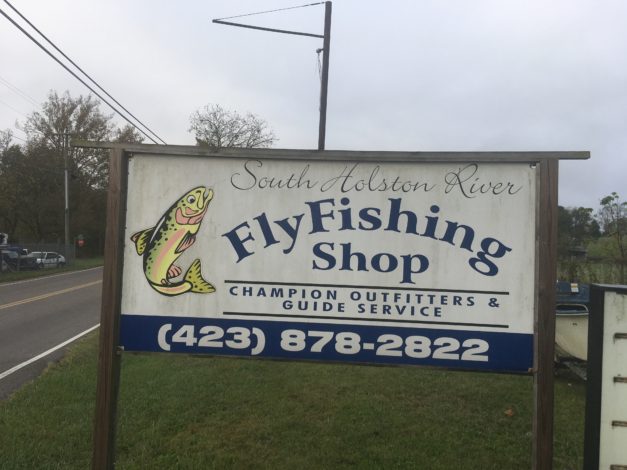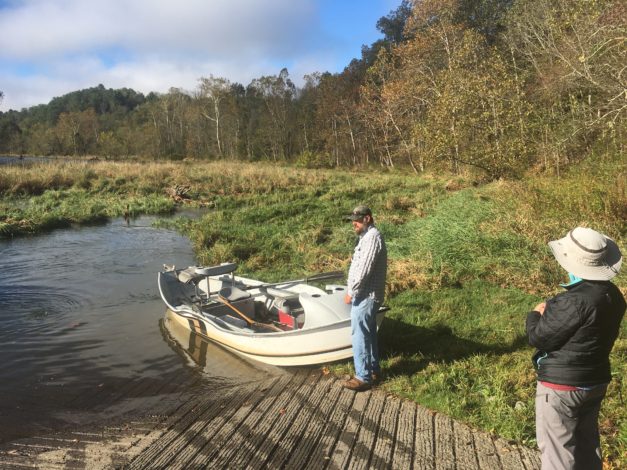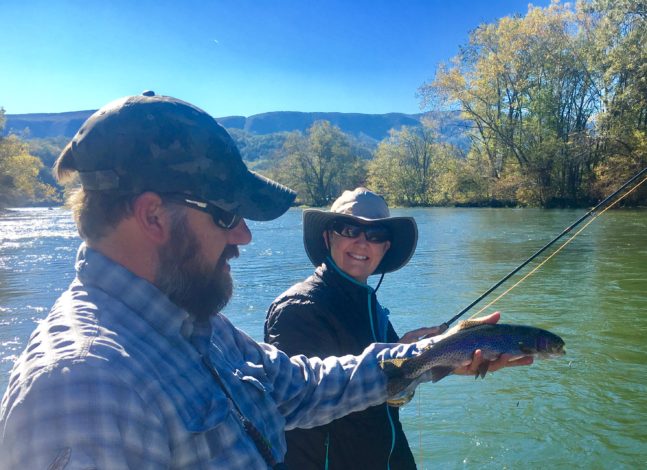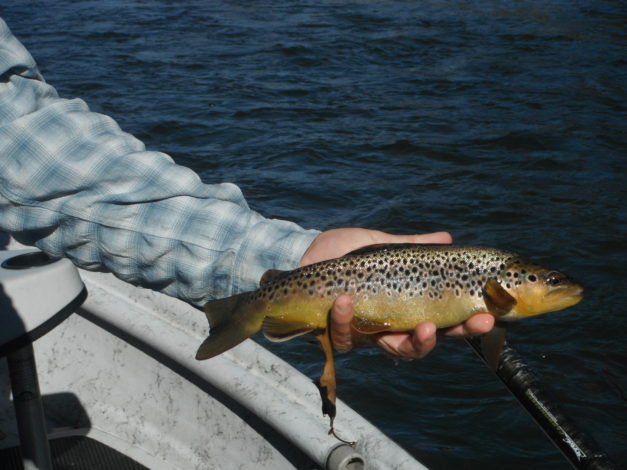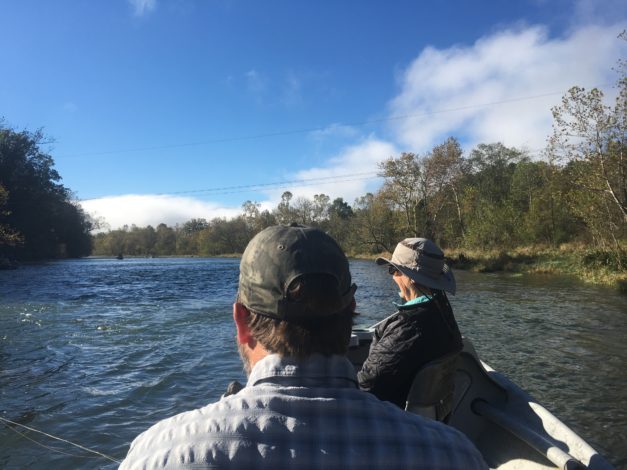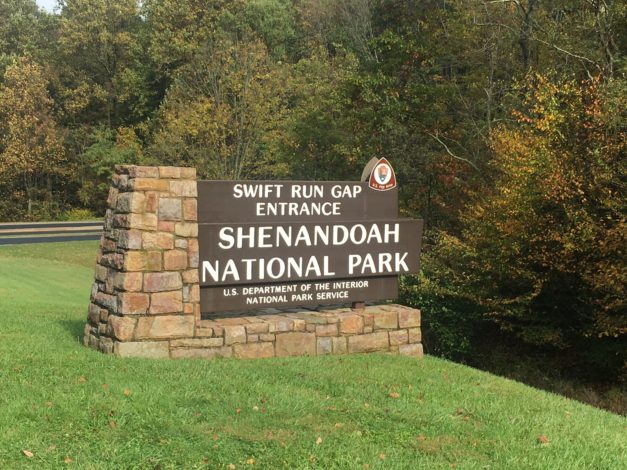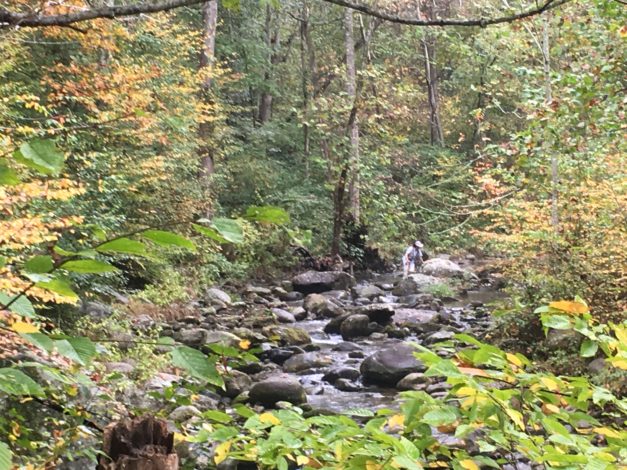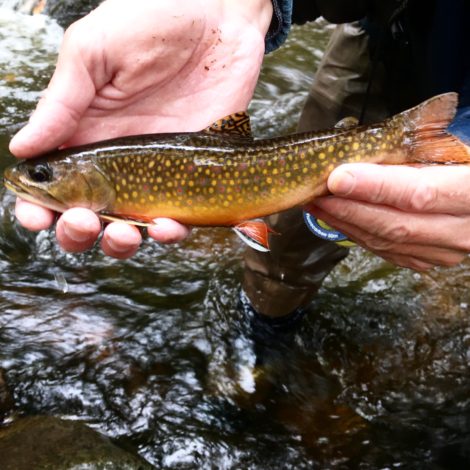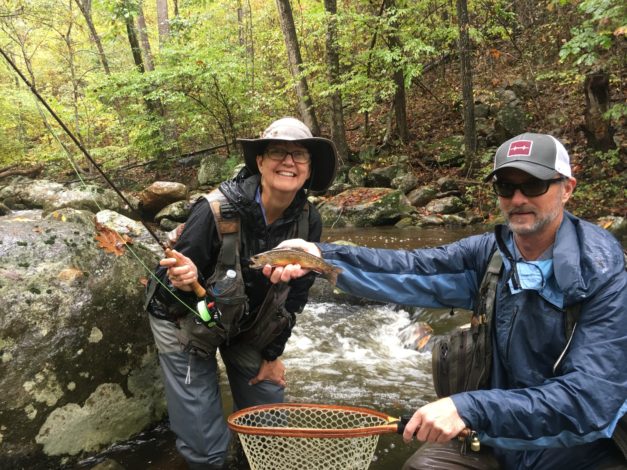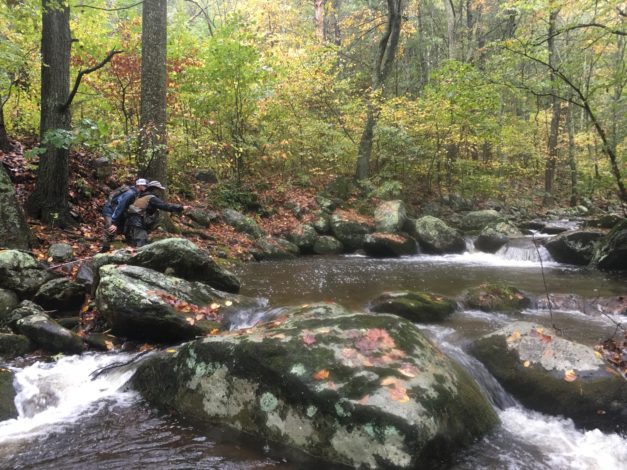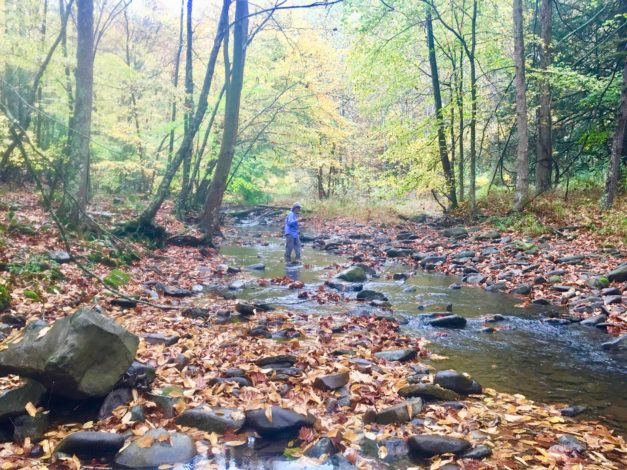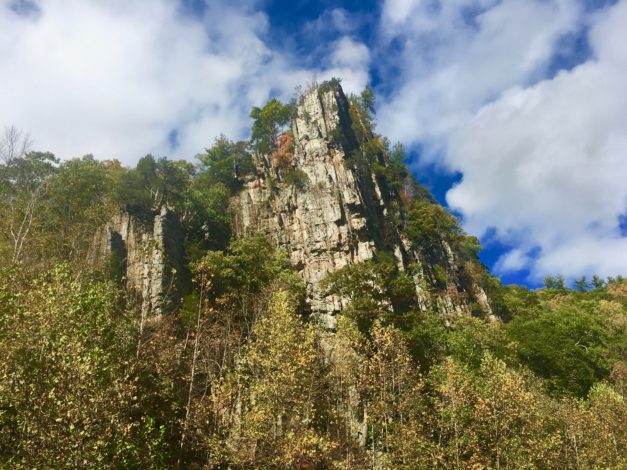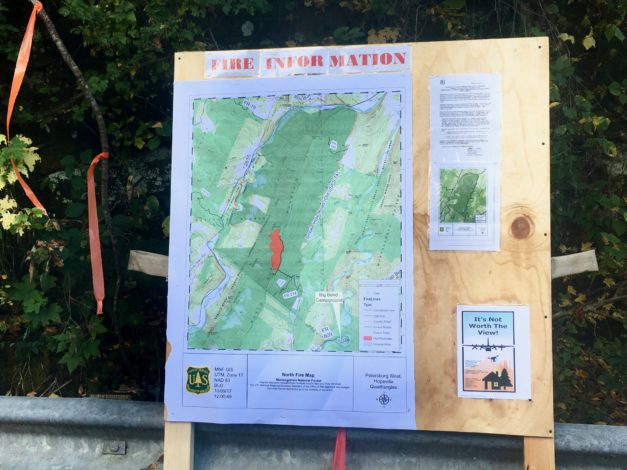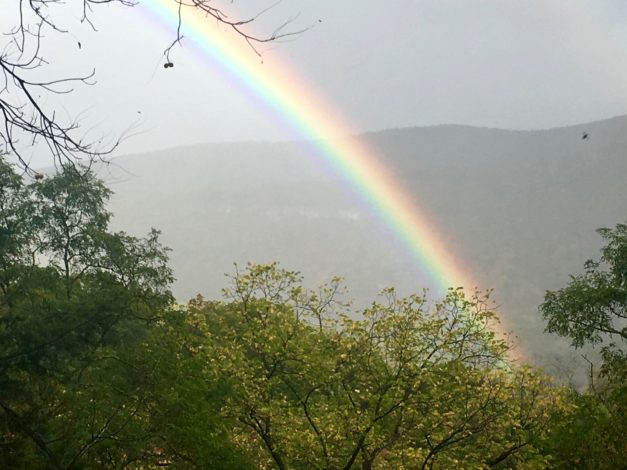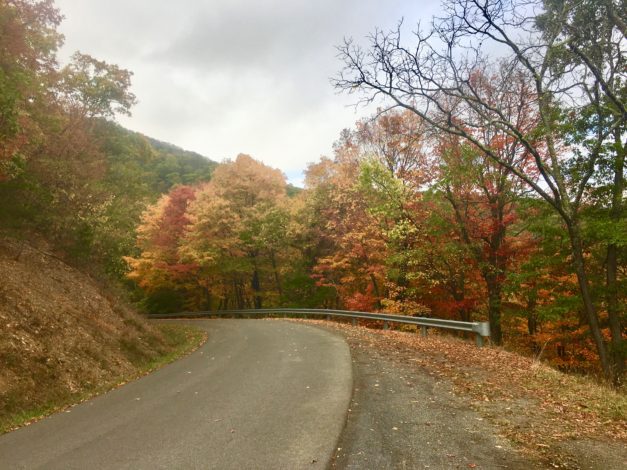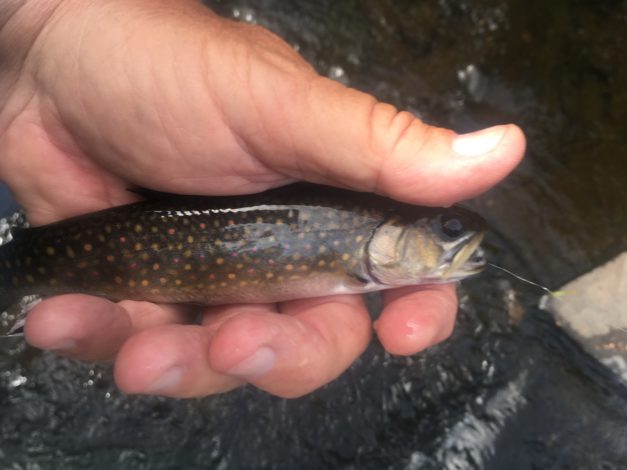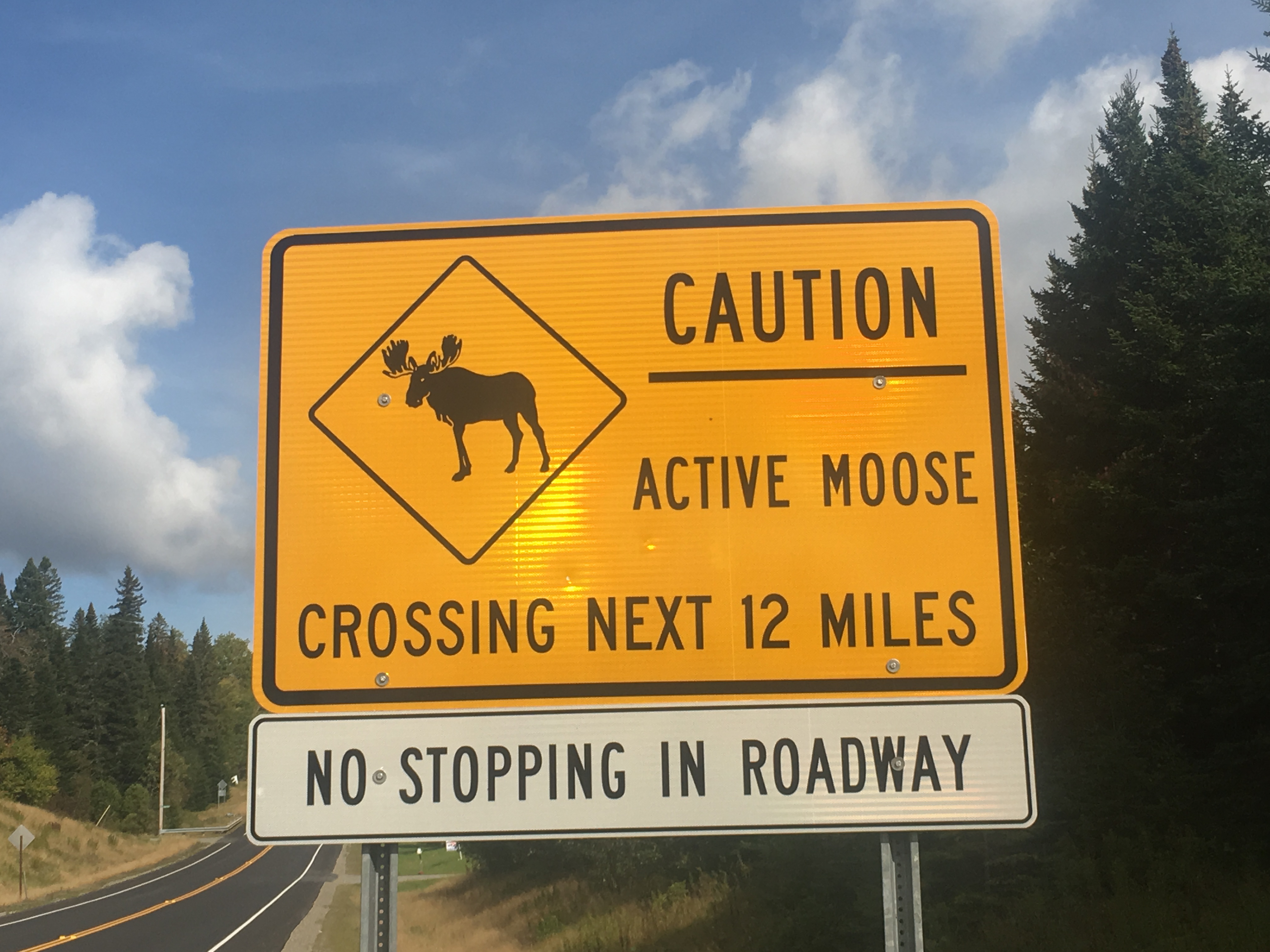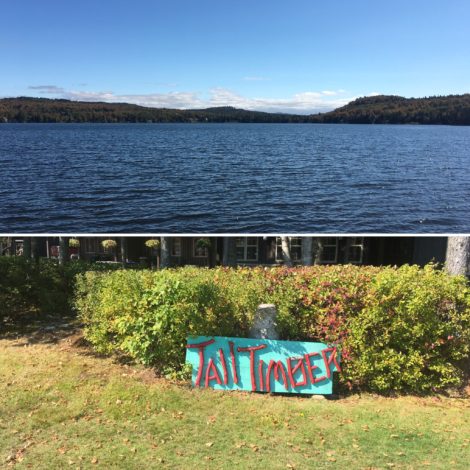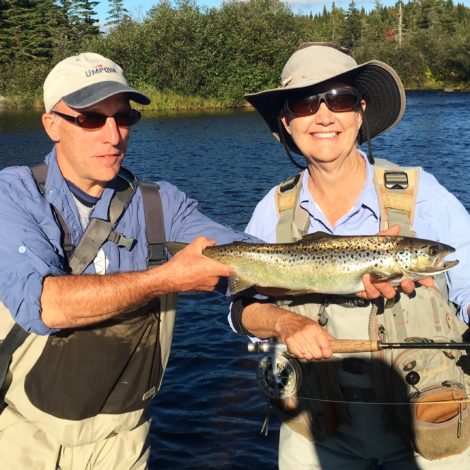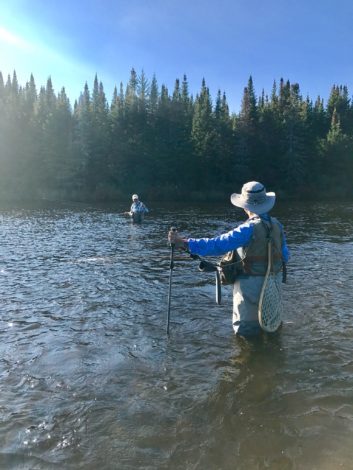When Barb and I arrived at our meeting spot to fish the Hiwassee, we met Charlie, who was running the shuttle for our guide. As we were sharing stories about the river, Charlie said, “Do you hear it?” In this case, the “it” was a train coming our way. Our meeting place turned out to be a boat launch located under a train bridge. As the train was passing by, my attention shifted to the river. I’m not really sure what I’d imagined for the Hiwassee, but I was surprised at how wide it truly was. What I wasn’t surprised about were the rapids that could be seen upstream and downstream of the boat launch. I’d read about how much fun people have whitewater rafting/kayaking on the Hiwassee, but we were there to fish.
A moment later, our guide arrived pulling a drift boat behind which made us happy. We’re much more comfortable in drift boats than in rubber rafts. Out popped Jeff Sharpe, our guide for the day from Southeastern Anglers, an outfitter based in Reliance, TN. After introductions all around, we drove across the bridge and dropped into Reliance Fly and Tackle, a great little fly shop, deli, market and gathering place for local anglers. Of course, Jeff and Charlie knew everyone inside, including a small group in a back corner enjoying coffee and conversation to start their day. Jeff grabbed a few flies and off we went, upstream toward our put in spot.
As we drove upstream, along the bank of the Hiwassee, we couldn’t help but notice all the whitewater “stairs” of rapids. Jeff talked about the rock structure that lines the river and how it produces the unique “challenges” to rowing the Hiwassee. We dropped the boat in the water and waved goodbye to Charlie who was shuttling Jeff’s truck and trailer down to the Reliance boat launch.
As we started fishing, Jeff had Barb on a streamer rig and me on a nymph rig. After Barb had landed a couple of fish and continued to get more bites, Jeff switched me onto a streamer/dropper rig as well. There was only one generator working at the dam upstream as we started our day, but it was supplying enough water for us to fish the upper section of water. We were having fun picking up a fish here and there as we dodged rocks, found good runs for fishing and went through some good rapids.
When it was time for lunch, Jeff rowed us back into a small creek that fed into the river, back to a picnic area tucked back in a beautiful spot. Lunch with Jeff was a real treat as he personally had prepared a rotisserie chicken for us to enjoy. He coupled that with hot backed beans, potato salad, various pickles, rolls and drinks… and then, apple pie for dessert. We rarely eat this good on the river and really enjoyed it… and…. Charlie even stopped by to grab a quick bite with us.
We decided to do our “Guide Talk” with Jeff on the bank of this small creek and setup our tripod and camera to get ready. When we finished the “Talk”, I noticed that the tripod legs were now underwater!
Jeff had told us that we were not just having lunch, but letting the river rise and catch up to us, as a second generator was turned on at the dam. Sure enough, as we rowed back out to the main channel of the Hiwassee, it was a totally different river… LOTS more water, moving faster now.
We drifted downstream and noticed that Jeff was working even harder, navigating the river and putting us on fish. As we continued fishing we spotted eagles soaring and fishing along with us. We learned the most difficult of the rapids Jeff had to run were near the end of our float… Stairstep, Funnel and Devil Shoals Run. We’d caught plenty of gorgeous fish, so we just sat back and enjoyed our run through these whitewater challenges. Jeff did a great job of keeping us upright all the way to our takeout.
It was so much fun fishing and floating with Jeff on the Hiwassee that as we got out of the boat in Reliance, we were thrilled we’d see Jeff again in two days to fish the Tellico. For now, enjoy our “Guide Talk” with Jeff on the Hiwassee River.

